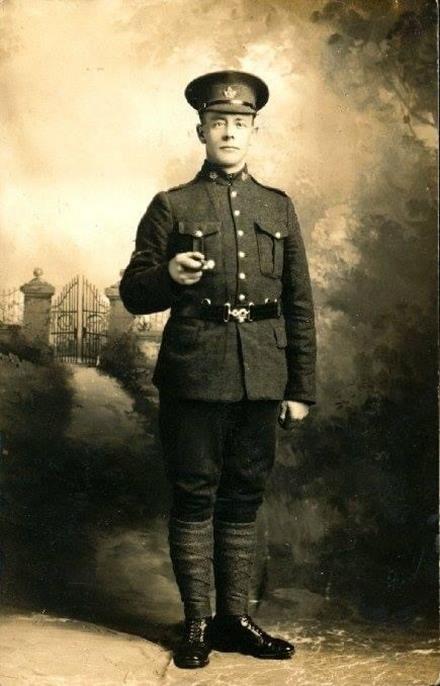**** DNR Release
Canadian soldier of the First World War identified

The Department of National Defence and the Canadian Armed Forces have confirmed that the grave of an unknown soldier in Bois-Carré British Cemetery, in Thélus, France, is that of Sergeant Arthur Melvin, a Canadian soldier of the First World War.
Arthur Davidson Melvin was born on June 3, 1887, in Udny, Aberdeenshire, Scotland, to Helen “Nellie” Melvin (née Wallace) and James Melvin. He lived with his parents and nine siblings in Whiteashes, Aberdeenshire, until he immigrated to Canada sometime after 1901. He worked as a pipefitter until he enlisted with the 56th Infantry Battalion, Canadian Expeditionary Force (CEF) on May 18, 1915, in Calgary. In March 1916, he sailed for England, and after training, transferred to the 31st Infantry Battalion, CEF, and was sent to France. He was promoted to the rank of corporal and then sergeant.
In the spring of 1917, in the Battle of Arras, which included the assault on Vimy Ridge, the 31st Infantry Battalion fought as part of the 6th Brigade of the 2nd Division. Sergeant Melvin was first reported missing, and later presumed dead on April 9, 1917, in the effort to clear and hold the village of Thélus. He was 29.
The Canadian Armed Forces has notified the family of Sergeant Melvin’s identification and is providing them with ongoing support. A headstone rededication ceremony will take place at the earliest opportunity in the Commonwealth War Graves Commission’s Bois-Carré British Cemetery in Thélus, France.
Quick Facts
- Sergeant Melvin is commemorated on the Canadian National Vimy Memorial, erected in memory of Canadian soldiers killed in France during the First World War who have no known grave.
- In June 2019, the Directorate of History and Heritage (DHH) received a report from the Commonwealth War Graves Commission (CWGC) which raised the possibility that Grave 1, Row C, Plot 2, in the Bois-Carré British Cemetery in Thélus, France, was that of Sergeant Arthur Davidson Melvin. Extensive research undertaken by CWGC and DHH confirmed the identification. Research was conducted using numerous archival sources, including war diaries, service records, casualty registers, and grave exhumation and concentration reports.
- With the assistance of the Canadian Forces Forensic Odontology Response Team and the Canadian Museum of History, the Casualty Identification Review Board was able to confirm the identity of the remains as those of Sergeant Melvin in October 2021.
- The Canadian Armed Forces Casualty Identification Program, within DHH, identifies unknown Canadian service members when their remains are recovered. The program also identifies service members previously buried as unknown soldiers when there is sufficient evidence to confirm the identification.
- The Commonwealth War Graves Commission commemorates the 1.7 million Commonwealth servicemen and women who died during the two world wars. Using an extensive archive, the Commission works with their partners to recover, investigate, and identify those with no known grave to give them the dignity of burial and the commemoration they deserve.



